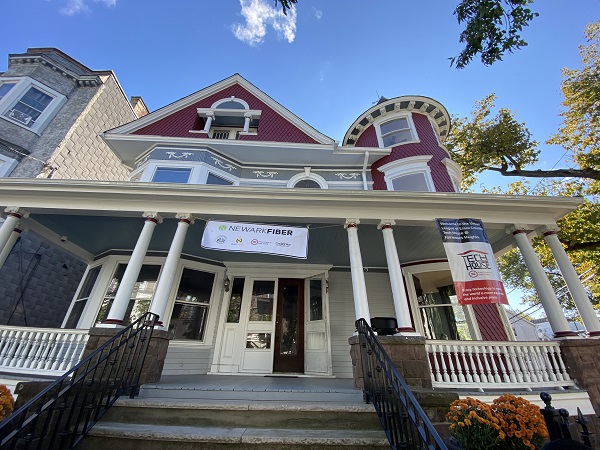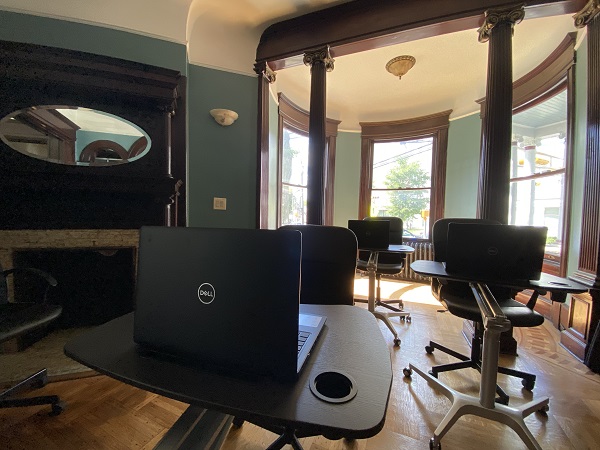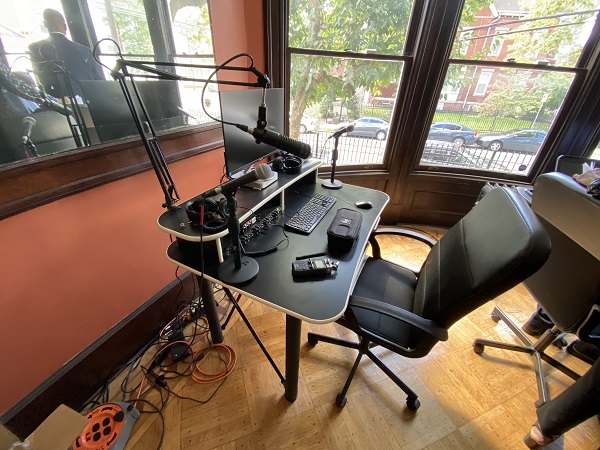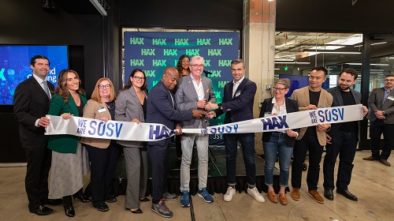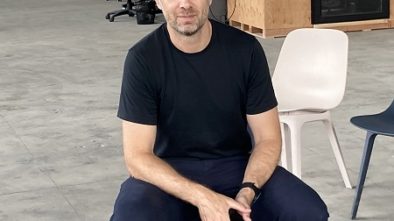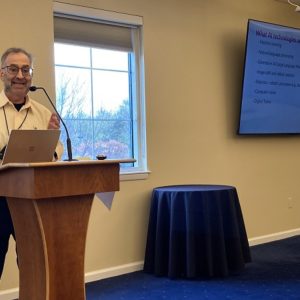New Tech House In Newark Aims to Close Digital Divide
By Thomas Wiedmann of TAPinto Newark
A 19th-century Victorian home in Newark’s Fairmount neighborhood that has been repurposed through a partnership between the city and community partners is now planned to bring technology training and education resources to underserved residents right in their backyard.
The newly renovated home, dubbed “The Tech House,” is aimed to help disadvantaged residents attain technology industry skills to compete and succeed in a modern global economy, positioning itself to become a model for future equitable development projects in Newark. The initiative for the facility, located at 152 Littleton Ave., was headed by the Urban League of Essex County in partnership with the city’s Economic Development Corporation. The Tech House and all the training that will occur in it was conceived by the Urban League.
“We are giving access to low-income residents and working-class citizens so they themselves have the opportunity to do STEAM research and also gain computer literacy in the comfort of their own neighborhoods,” said Bernel Hall, CEO and president of Invest Newark, a nonprofit that works to create economic opportunities for area residents and businesses.
Residents will be offered a number of tech services at the facility such as computer literacy training. The facility will also serve as a professional development center for teachers interested in enhancing their knowledge in STEAM and other forms of digital technology.
In order to offer these robust tech services to residents, the home first needed to be equipped with reliable internet access. Invest Newark did so by expanding its Newark Fiber program with partner, GigXero, to equip the Tech House with high-speed connectivity.
Hall explained that Invest Newark has a lease with the city for 26 strands of fiber where officials oversee its maintenance and distribution to bring reliable internet access to the city’s five wards.
Additionally, it will provide college students pursuing tech education with hands-on experience teaching STEAM skills to middle and high school students to prepare them for entry into college and the high-tech workforce.
In a city where many of its residents were disproportionately affected by the digital divide that was highlighted during the pandemic, Hall explained that the Tech House may be able to help close this gap.
“We are actually building a bridge over the digital divide,” he said.
In 2020, the divide cut across racial and economic lines when students and many parents were forced to work in a single home. As parents and children made the shift to working and learning from home, many residents, particularly those economically disadvantaged, found themselves lacking necessary devices and internet connectivity.
At the height of the divide, state Department of Education officials reported that about 230,000 students were in need of devices and connectivity, which would cost roughly $115 million to close this gap.
By implementing a high-tech facility that is accessible to residents in the heart of one of Newark’s more underserved neighborhoods, Urban League of Essex County President and CEO Vivian Cox Fraser called the Tech House an investment into the community.
“I like to think of technology as a great equalizer,” said Cox Fraser. “Young people, older people – if you want to learn something, we want you to come to the Tech House and learn it. It’s about expanding economic opportunity.”
Before the Littleton Avenue home strives to become a hub for residents to attain industry-leading tech skills and resources, Cox Fraser explained that the home was previously owned by an elderly couple faced with an impending foreclosure.
When the Urban League’s housing staff tried to step in and help the couple, Cox Fraser said that it was too late. The dilapidated home was beyond repair of what the owners could afford.
The Urban League then assisted the family to move out and stepped in to eventually take over the home with the help of state funding and investment, totaling about $500,000.
“We wanted this house because we wanted to show that this type of property exists in Newark, and it deserves to be restored,” she said.
By investing in the community and development projects like the Tech House, the initiative falls in line with the League’s efforts to serve disadvantaged residents in Newark and countywide.
Darrin Sharif, a former director of operations for the Urban League of Essex County who will now serve as the Tech House Project Director, said that in 2015, the league sponsored a coding program for underserved Newark youth designed to introduce them to programming and other digital technologies.
As the program grew, so did the students’ interests in other fields of the digital industry. Sharif said that the program expanded to multiple high schools and middle schools while partnering with higher education institutions like New Jersey Institute of Technology and Bloomfield College to provide additional services.
By offering high-quality resources and facilities to youth in Newark, the Tech House can help build upon the Urban League’s mission to lead a new generation of children to become leaders in the tech field.
“We’re all fluent in English, but students need to be fluent in technology,” Sharif told TAPinto Newark. “We have to get students better technology and teach them how to leverage it so that they can become marketable and competitive in today’s industry.”
Bringing tech hubs to communities like Fairmount will also complement the city’s plans to invest in its residents as Newark recovers from the COVID-19 pandemic.
Earlier this year, Newark Mayor Ras Baraka laid out his objectives for a two-year economic recovery plan aimed to revitalize many of the city’s small businesses and residents that were severely impacted by the pandemic.
Part of the mayor’s objective is for the city to use federal monies it received from the 2021 American Rescue Plan to enhance what he called a “tech cluster.” The goal, he said, is to create permanently affordable commercial space, offer low-cost broadband access to small businesses through Newark Fiber, and expedite development approvals.
“We’re using ARP dollars to begin to extend fiber directly into our community to provide broadband at no costs for some residents and at a low cost for others,” Baraka told TAPinto Newark. “Fairmount is one of the first neighborhoods that we’re doing that in. We are going to do that in all of the housing projects in the city of Newark, to all of Newark Public Schools system, and we’re working on that as we speak.”
This article was reposted with the permission of TAPintoNewark.net. The original article, with additional photos, can be found here.

